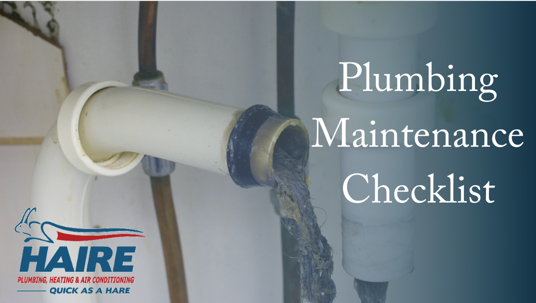If you want to ensure that your plumbing system keeps working as it is supposed to, it's important to be aware of the various issues that can crop up. By staying on top of the possible issues you can avoid a huge repair bill and keep everything running smoothly.
Here’s a quick checklist of things to look for:
- Leaky Faucets -- Wherever the leaky faucets are, (bathroom, kitchen or laundry room) it's important to fix them while they're small. Even if it seems rather insignificant, any water leaks can cause problems such as mold build-up, and they will get bigger and sometimes suddenly. Faucets can leak at the source where water comes out, and they can also leak at the base of the faucet. Check both areas and repair as needed.
- Slow Drains -- Hair, food particles and other debris can build up in a sink or tub causing water to drain slowly. If you want to avoid a completely clogged drain, it's important to take care of slow drains as soon as possible. You can do this by removing built-up hair (most common in the bathroom sinks) using a special tool called a zip-it tool. You can also use a combination of baking soda and vinegar for each drain to freshen them up after removing the debris that is slowing down the drain to rid your drain of anything you missed.
- Low Water Pressure -- If you notice a change in water pressure coming from your shower or sinks the culprit is likely the faucet aerators being clogged with minerals. This is easy to clean using something like Lime-A-Way. Simply remove the aerators and soak according to package instructions to remove mineral build-up.
- High Water Pressure -- If your water pressure seems super high, either suddenly or has always been super high this can also be a problem. You can check water pressure with a pressure gauge. If the pressure is showing as too high it's important to replace the pressure regulator. It's not safe to have super high water pressure, it can destroy your pipes and cause quite a mess if not taken care of as soon as possible.
- Running Toilets -- Nothing wastes water quite like a running toilet. If you find that you're having to wiggle the handle too much to get the toilet to stop running it's time to replace the works inside the toilet. You may only need to replace various parts like the flapper chain or the flapper seal. A great way to check to see if your toilet is running, even if you can't hear it, is to put some food coloring into the tank and see if the bowl water becomes colored without flushing it.
- Sink Leaks -- Check under all cabinets with sinks for leaks. If there is any moisture at all under any sink it should be taken care of. Try to locate the source of the leak and repair it using a patch or by replacing the pipes. Catching small leaks before they become large can save both time and money.
- Garbage Disposal Issues -- Sometimes garbage disposals can leak too. Look to the manufacturer's manual to learn how to maintain your garbage disposal. Check regularly for leaks even if the disposal seems to be working fine. It should be completely dry under the sink. If it's not dry or there is condensation under the skin assume a leak and locate it and repair it.
- Avoid Sewage Backups -- If you have a septic system, it's important to follow the instructions you were given to care for it. It's also important to be careful what you put in your sewer, down your drains, and in the toilet. Sewer issues can be very expensive. Know the signs of a sewer drain clog so that you can get to it before it becomes too serious.
By being mindful of all of these issues with plumbing in your home you can avoid problems becoming bigger and costing more money. Maintenance is always less expensive than massive repairs due to waiting too long. Remember that your home is likely your largest investment, keeping things working well can only improve your investment.
And, of course, if you find a problem with any of the above maintenance checks, be sure to give us a call. We’ll be there “Quick as a hare.”

